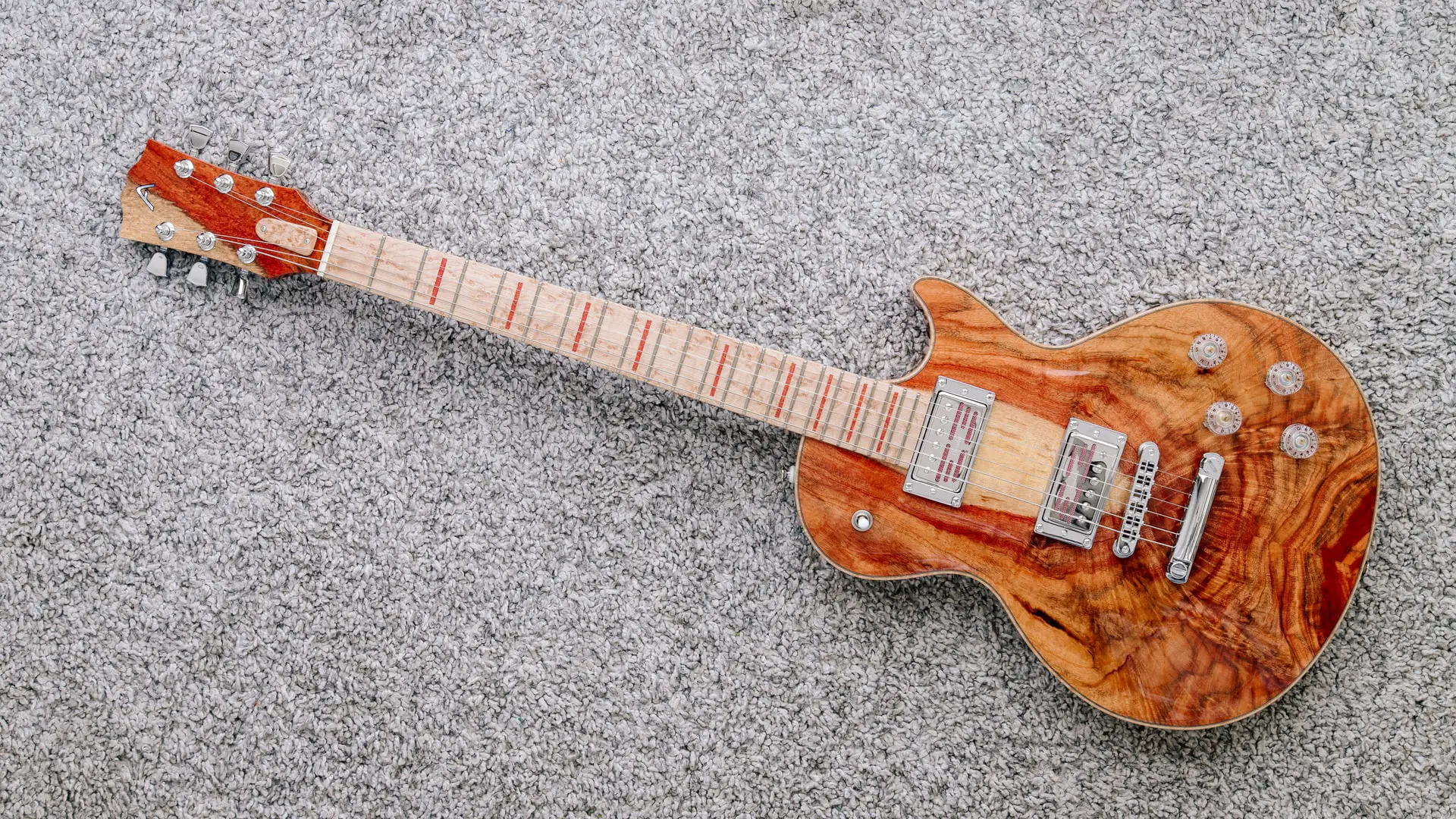Generally, a guitar, especially a Maple body guitar, has a life of 8 to 10 years. But it is subject to how you take care of it. Huge pressure, temperature, and even humidity can easily damage them. Therefore, they need proper care and an environment to last longer.
But, how to take care of a guitar with a Maple neck or body? Well, this article is all about it. Here, I will discuss all the necessary steps. It will keep your guitar durable for years.
The care of guitars includes a few simple steps. Regular cleaning is important. Using lemon oils and adjusting the Truss rod is essential. You also need to store your guitar in a humidity-controlled space.
As an add-on, change the strings at regular intervals. It also keeps your guitar in good condition. If you possess an electric guitar, regularly clean the pick-ups.
I have been playing guitars for more than seven years . I have played several guitars which include both acoustic and electric guitars. At present, I am playing a Maple body guitar, Fender Brad Paisley
I remember, I bought it almost six years ago. It still looks awesome and sounds almost similar to how it sounded six years ago.
In this article, I am going to share how I have kept my guitar in a good condition. If you are a guitarist, especially a beginner, this article will definitely help you.
6 Ways To Take Care Of Guitar With Maple Neck or Body
1. Store the Guitar in a Case
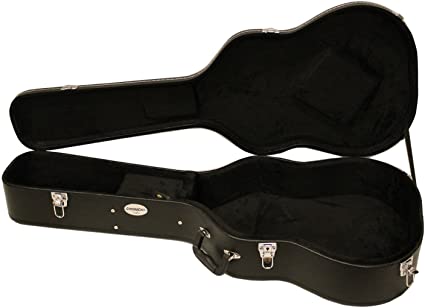
Storing maple body guitar in a proper case is the best way to ensure longevity. Keep your guitar in a good-quality case. It protects from dust, temperature, humidity, and unwanted pressure.
Huge temperature differences and humidity are the greatest enemies of a guitar. As guitars are mainly made of wood, these two factors cause huge damage to them. That is why I recommend storing the guitar in a case when not in use.
Guitars on the stand or hanging from the wall may look amazing but you have to closely monitor the temperature difference and the humidity level of the room.
I think it is easier to control these two factors in a case. That is why my recommendation is always to keep them in a case.
Hard case or soft case, both are good for storing the guitars. However, hard cases provide extra protection. Yes, they can handle external pressure and protect your guitar from damage.
I use a Fender hard case to store my Maple body electric guitar. It is a bit expensive but worth every penny. For my acoustic guitar, I use a soft padded guitar bag, which is water resistant. They protect my guitar from humidity and external pressures.
2. Release The String Tension Before Storage
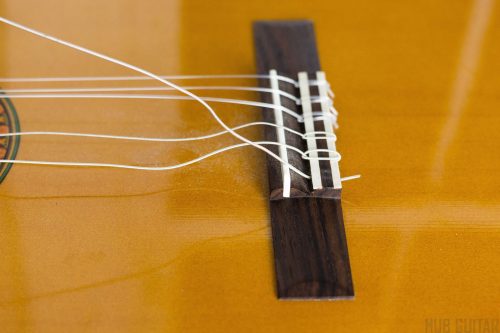
Before storing your guitar in a case, release the tension of the strings by one or two notes. It will protect the Truss road, bridge, and neck of the guitar from damage.
Being a guitarist you know that the strings are fastened in high tension. If the tension is not released, it affects your strings continuously. It can damage the bridge and neck of the guitar. It can affect the Truss rod too.
Tension is also required to keep the bridge, neck, and Truss rod in good condition. Doesn’t it appear the contrary? Well, tension is required, but not too much. Tension is required that much standard tuning applies to the strings.
That is why I release the tension of the strings by two notes before storing them. These simple steps keep my guitar’s neck, bridge, and Truss rod healthy.
3. Clean the Guitar Regularly
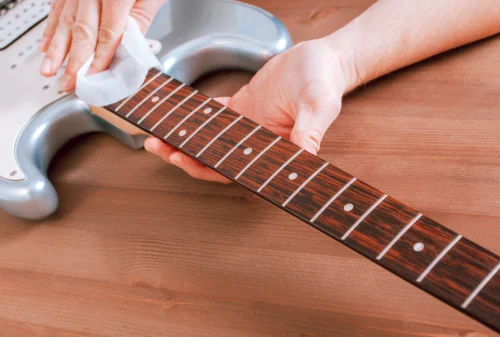
Cleanliness is a must for a guitar to make it durable. Dust and sweat on the fret, neck, and body of Maple guitars damage their finishing.
It also damages the wood which may compromise the tone of your guitar. Therefore, cleaning it regularly with a microfiber cloth is a must.
When talking about cleaning there are two types of it. One is regular cleaning with a soft cloth. It helps to draw out the dirt and sweat traces from the fret, body, and pick-ups. The second one is a full cleaning that you should perform at least twice a month.
I regularly clean my guitar every day before putting it into the case. Moreover, I properly clean it twice a month. This essential treatment increases my guitar’s life by a few years. Here are the steps of cleaning a Maple body guitar.
How to Clean a Maple Body Guitar?
- First, remove the string of your guitar.
- Then wipe out the dirt from the fretboard using a soft cloth.
- Now apply a few sprays of guitar cleaner and wipe the fretboard.
- Wipe the body thoroughly in the process like the fretboard.
- Repeat the step.
- Now again dry it with a dry, soft cloth.
- Finally, apply guitar polish to make it look glossy and gorgeous.
This is how I clean my guitar’s body and fretboard. It really helps me to keep my guitar healthy.
Cautions: Do not apply water, soap, or stain cleaner. It will damage the body and the finishing of your guitar.
Here’s a detailed article that shows you how to clean your guitar:
- White Gunk On Guitars: 5 Cleaning Tips & What Is It Really
- Sticky Guitar: How To Clean & Prevent (Body, Neck & String)
4. Apply Lemon Oil
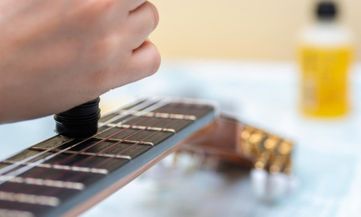
Using lemon oil enhances the life of the Maple fretboard. It keeps the fretboard moisturized and conditioned.
Oiling also protects the fretboard from the moisture of the air. However, use it after cleaning your guitar once or twice a month.
Lemon oil is a lightweight oil that moisturizes the Maple fretboard. In addition, it protects the Maplewood from catching the moisture of the air. I recommend using good quality lemon oil made for guitar fretboard.
I use D’Addario Lemon Oil for my Maple body guitars. It conditions my fretboard and keeps it smooth. Here are the simple steps to oil your fretboard safely.
How to Oil Maple Fretboard?
- Firstly, remove the strings.
- Then, clean the fretboard of your guitar using a good guitar cleaner.
- Now dry it using a soft cloth.
- Then dampen a microfiber cloth with a few drops of lemon oil.
- Now, wipe it all over the fretboard.
This is how you can easily condition your Maple fretboard using lemon oil. I use lemon oil twice or once a month depending on the condition of my guitar’s fretboard.
Note: You could also use other oils if you don’t have lemon oil. Check out my article here: What Oil Can You Use On Guitars? Ft. Baby, Coconut & Lemon Oil
5. Change the Strings at Regular Intervals
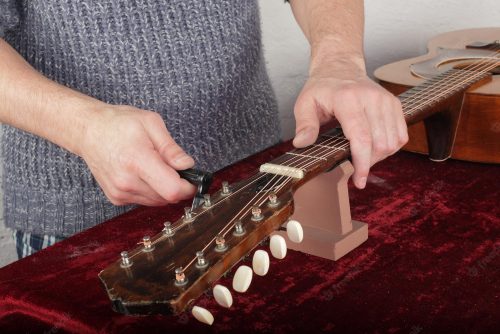
Changing the strings regularly also increases the life of a Maple body guitar. Strings are made of metal that catches rust over time. It can damage the wood and your guitar too.
Therefore, changing the string at an interval of two to three months keeps your Maple body guitar healthy.
It is quite obvious that over time the strings of your guitar catch rust. This often causes frequent mistuning of the guitar. However, it can also damage the tonewood, in our case the maple.
To protect your Maple fret and body from stains of rust, change the strings once in three months. I use D’Addario strings for both my electric and acoustic guitars. These strings are good enough in quality. However, I change them every three months.
This protects my guitars from stains of rust. As an add-on, the tone of my guitar always appears clear and punchy.
You could also take this opportunity to try other lighter or heavier strings. Check out my other article to see the difference:
- Heavy Vs Light Guitar Strings: Sound, Playability & Tuning
- Tightened Vs Loose Guitar Strings: Effects To Pitch & Tone
6. Adjust the Truss Rod
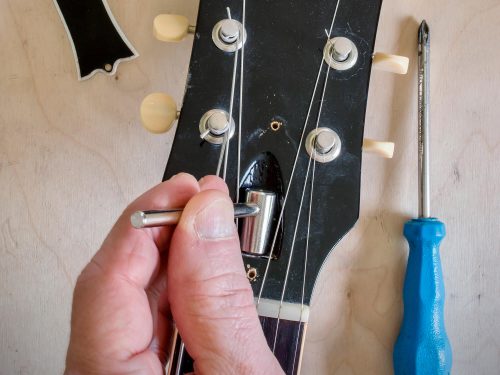
Truss rod adjusting is another essential part of keeping the Maple neck of your guitar healthy. You should adjust the Truss rod whenever you are cleaning the guitar.
The Truss rod counters the tension of the strings and keeps the Maple neck of your guitar straight. If the Truss rod is not adjusted at regular intervals, the unbalanced tension may damage the neck of your guitar.
I adjust the Truss rod of my guitar every week. It helps me to keep my Maple body guitar’s neck healthy and durable. I recommend adjusting the Truss rod at least twice a month after cleaning the guitar.
Also Read: How To Adjust Truss Rod To Fix Fret Buzz: Which Way To Turn?
How to Know When Truss Rod Needs Adjustment?
If you feel the distance between the strings and the fretboard has increased, it needs an adjustment.
As I have already disclosed, the Truss rod counters the tension of the strings. It keeps the neck of the guitar straight. When too much pressure happens there, the Truss rod relocates.
There comes a distance between the strings and the fretboard. At this moment, you have to adjust the Truss rod.
Final Words
These are the 6 essential steps that I am following. These steps help me to properly take care of my Maple body and neck guitar. I really get amazing results following these steps over the years.
From my experience, I can assure you that these 6 steps can increase your Maple guitar’s life by a few years.


